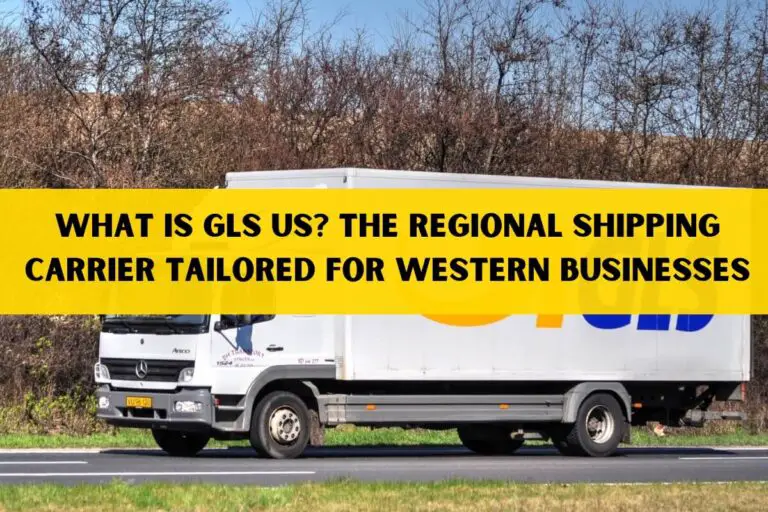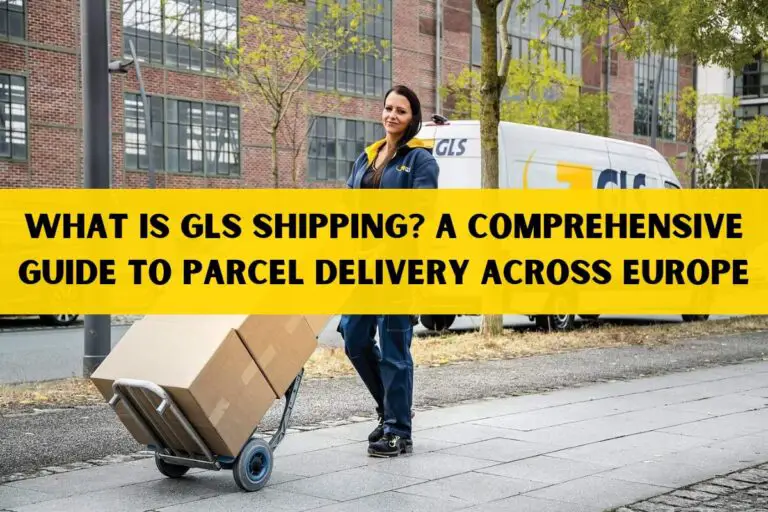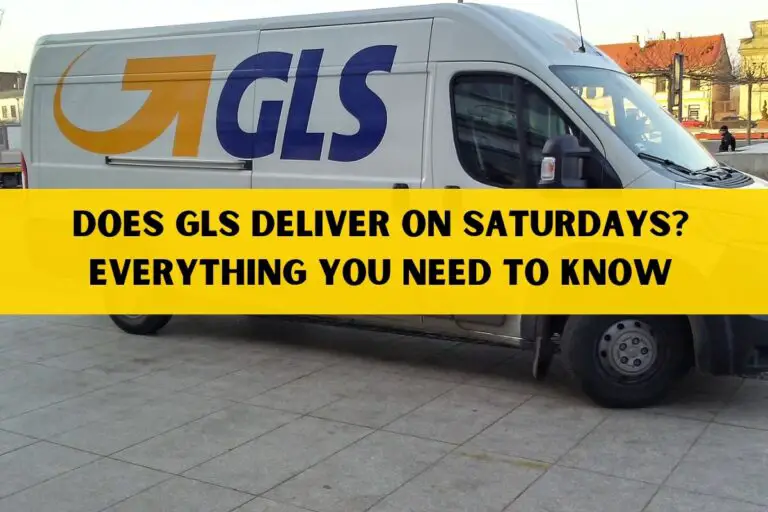What is GLS Tracking? A Comprehensive Guide to Parcel Delivery Tracking
In today’s fast-paced world, where online shopping has become a daily routine for millions, tracking your parcels and packages has become crucial. With the rise of e-commerce, shipping, and logistics companies have had to adapt and provide efficient tracking services to keep customers informed about their deliveries. One such service that has gained immense popularity, especially in Europe, is GLS tracking.
GLS (General Logistics Systems) is a leading multinational logistics company that offers a wide range of parcel delivery and shipping services across Europe and North America. But what exactly is GLS tracking, and how does it work?
GLS tracking refers to the network of technologies and systems used by GLS to track and monitor outbound packages throughout the delivery process, providing customers with real-time visibility and updates on the status and location of their parcels.
We’ll explore GLS tracking, covering its features, benefits, and how it works. Topics include:
- Understanding the GLS tracking system and its capabilities
- How to track your GLS parcels using tracking numbers
- The different shipping services offered by GLS and their delivery timeframes
- Special services and features available with GLS tracking
- Tips and best practices for efficient parcel tracking and delivery
So, whether you’re an online shopper eagerly awaiting a package or a business owner looking to streamline your logistics operations, this guide will provide you with valuable insights into the world of GLS tracking.
What is GLS Tracking? Unveiling the Mysteries
At its core, GLS tracking is a system that allows customers to monitor the progress of their parcels from the moment they are shipped until they are delivered. It’s a crucial component of the logistics process, providing transparency and peace of mind to both senders and recipients.
The GLS tracking system relies on three key elements:
- Unique Parcel Barcodes: Each package handled by GLS is assigned a unique 2D barcode that contains all the necessary information about the parcel, including its destination, contents, and tracking number.
- Handheld Scanning Devices: GLS employees use specialized handheld scanners to scan the barcodes at various checkpoints throughout the delivery process, such as when the parcel is loaded onto a delivery vehicle or when it arrives at a distribution center.
- Centralized Tracking Software: The scanned data is transmitted in real-time to GLS’s centralized tracking software, which updates the parcel’s status and location, making this information available to customers through the online tracking platform or mobile apps.
With each scan, the tracking system records the parcel’s location, the date and time of the scan, and any relevant updates or actions taken, such as a delivery attempt or a change in the delivery address. This data is then accessible to customers, allowing them to monitor their parcels’ progress from the comfort of their homes or offices.
How to Track Your GLS Parcels: A Step-by-Step Guide
Tracking your GLS parcels is a straightforward process that can be done online or through mobile apps. Here’s a step-by-step guide on how to track your GLS parcels:
- Obtain the Tracking Number: When you place an order or send a parcel through GLS, you’ll receive a unique tracking number. This number can be found on the shipping label, in the confirmation email, or through the retailer or sender’s website.
- Visit the GLS Tracking Website: Head over to the GLS website (https://gls-group.eu/) and locate the “Parcel Tracking” section.
- Enter Your Tracking Number(s): In the provided field, enter your tracking number(s). You can track multiple parcels at once by separating the numbers with commas or spaces.
- View Tracking Details: After submitting the tracking number(s), you’ll be presented with detailed information about your parcel(s), including the current status, location, and a timeline of all the scans and updates.
Alternatively, you can download the GLS mobile app (available for iOS and Android) and track your parcels on the go. Simply enter your tracking number(s) in the app, and you’ll have access to real-time updates and notifications.
GLS Shipping Services: Choosing the Right Delivery Option
GLS offers a variety of shipping services to cater to different customer needs and delivery requirements. Here are some of the most popular services:
Standard Parcel Delivery
The standard parcel delivery service is the most commonly used option for domestic and international shipments. It provides reliable and cost-effective delivery within defined timeframes:
- Domestic Delivery: Most national parcels are delivered within 24 hours (excluding islands and remote areas).
- European Delivery: Standard delivery times across Europe range from 24 to 96 hours, depending on the destination.
Express Delivery
For time-sensitive shipments, GLS offers express delivery services that prioritize speed and punctuality:
- National Express Delivery: Express parcels are typically delivered before the end of the next business day, and in some countries, even before noon.
- European Express Delivery: GLS delivers time-critical express consignments to many European countries before the close of business on the next working day.
International Shipping
GLS provides global shipping solutions for parcels and documents, reaching major business centers worldwide within a few days:
- Global Express Parcel: This service delivers parcels and documents quickly to destinations around the world, including the United States, Japan, Hong Kong, and Singapore.
Specialized Services
In addition to standard and express delivery, GLS offers specialized services to cater to various customer needs:
- FlexDelivery Service: This service allows recipients to choose a convenient delivery option, such as rescheduling the delivery date, changing the delivery address, or redirecting the parcel to a GLS ParcelShop.
- Shop Delivery Service: Parcels can be delivered directly to a GLS ParcelShop, where recipients can collect them at their convenience.
- Cash Service: GLS accepts cash on delivery (COD) payments and securely transfers the funds to the sender’s account within a few working days.
With such a diverse range of services, GLS ensures that customers can choose the delivery option that best suits their needs, whether it’s prioritizing speed, flexibility, or specialized handling.
GLS Tracking: Beyond Parcel Monitoring
While the primary function of GLS tracking is to provide real-time updates on the status and location of parcels, it offers several additional features and benefits that enhance the overall delivery experience:
Delivery Notifications
GLS tracking enables customers to receive notifications at various stages of the delivery process. These notifications can be sent via email or SMS, keeping recipients informed about important updates, such as when the parcel has been shipped, when it’s out for delivery, or if there’s a delivery attempt or delay.
Delivery Rerouting
If a recipient is not available to accept the delivery, GLS tracking empowers them to reroute the parcel to a more convenient location or time. This can be done through the online tracking platform or mobile app, ensuring that parcels are delivered successfully without unnecessary delays or missed deliveries.
Proof of Delivery
GLS tracking provides proof of delivery, which can be valuable for businesses or individuals who need to confirm that a parcel has been successfully delivered. This feature can help resolve disputes or provide evidence in case of lost or mishandled packages.
Delivery Preferences
Some GLS services, such as the FlexDelivery Service, allow recipients to specify their delivery preferences upfront. This could include selecting a specific delivery window, requesting a neighbor to accept the parcel, or choosing a GLS ParcelShop as the delivery location.
Environmental Responsibility
GLS is committed to sustainability and reducing its environmental impact. By providing efficient tracking and delivery services, GLS helps minimize the carbon footprint associated with unnecessary delivery attempts and transportation inefficiencies.
With these additional features and benefits, GLS tracking not only ensures transparency and visibility but also enhances the overall customer experience, making parcel delivery a seamless and hassle-free process.
GLS Tracking: Empowering Businesses and Individuals
GLS tracking is a valuable tool for both businesses and individual customers. For businesses, it offers several advantages:
Supply Chain Visibility
Businesses can leverage GLS tracking to gain real-time visibility into their supply chain operations. By monitoring the movement of parcels and shipments, companies can optimize their logistics processes, identify potential bottlenecks, and make informed decisions to improve efficiency and customer satisfaction.
Customer Service Enhancement
With GLS tracking, businesses can provide proactive updates to their customers, enhancing the overall customer service experience. This level of transparency and communication can help build trust and strengthen customer relationships.
Proof of Delivery
As mentioned earlier, the proof of delivery feature can be particularly useful for businesses that need to verify successful deliveries, resolve disputes, or comply with regulatory requirements.
For individual customers, GLS tracking offers peace of mind and convenience:
Order Tracking
For individual customers, GLS tracking is an invaluable tool for monitoring the status of their online purchases. With just a few clicks, customers can track their parcels from the moment they’re shipped until they arrive at their doorstep. This level of visibility not only provides peace of mind but also helps manage expectations and plan accordingly for the delivery.
Delivery Flexibility
GLS tracking empowers customers to take control of their deliveries. If they’re not available during the scheduled delivery time, they can easily reroute the parcel to a more convenient location, such as a neighbor’s address or a nearby GLS ParcelShop. This flexibility ensures that customers don’t miss important deliveries and can receive their parcels at a time and place that suits their schedule.
Environmentally Conscious Choices
By providing efficient tracking and delivery services, GLS helps reduce the environmental impact associated with unnecessary delivery attempts and transportation inefficiencies. Customers can feel good about choosing a logistics provider that prioritizes sustainability and minimizes its carbon footprint.
Best Practices for Efficient GLS Tracking
To make the most of GLS tracking and ensure a smooth delivery experience, here are some best practices to keep in mind:
- Provide Accurate Information: When placing an order or sending a parcel, ensure that you provide accurate and up-to-date contact information, including your full name, address, and phone number. This will help GLS deliver your parcel efficiently and minimize any potential delays or issues.
- Keep Your Tracking Number Handy: Make sure to save or note down your GLS tracking number as soon as you receive it. This unique identifier is essential for monitoring the progress of your parcel.
- Check for Updates Regularly: While GLS provides notifications for major updates, it’s a good idea to check the tracking information regularly to stay informed about the latest developments.
- Communicate with GLS: If you encounter any issues or have specific delivery instructions, don’t hesitate to contact GLS customer service. They can assist you with rerouting, rescheduling, or addressing any concerns you may have.
- Prepare for Delivery: Make sure to be available during the expected delivery window or arrange for someone else to receive the parcel on your behalf. This will help ensure a successful delivery on the first attempt.
- Provide Clear Access: If your parcel is being delivered to a residential address, ensure that the delivery location is easily accessible and free from any obstructions that could hinder the delivery process.
By following these best practices, you can streamline the delivery process and ensure a hassle-free experience with GLS tracking.
Conclusion
GLS tracking is a powerful tool that has revolutionized the way we monitor and manage parcel deliveries. By leveraging cutting-edge technologies and a robust network of logistics services, GLS provides customers with real-time visibility and control over their shipments.
Whether you’re an individual eagerly awaiting an online purchase or a business owner managing complex supply chain operations, GLS tracking offers invaluable benefits. From order tracking and delivery flexibility to supply chain visibility and customer service enhancements, this comprehensive system ensures transparency, efficiency, and peace of mind throughout the delivery process.
With a wide range of shipping services, specialized offerings, and a commitment to sustainability, GLS has established itself as a trusted partner for businesses and individuals alike. By embracing the power of GLS tracking, you can stay informed, make informed decisions, and enjoy a seamless and hassle-free delivery experience every time.





